Robert “Bob” Moline
The daily work rhythms Robert “Bob” Moline observed for nearly 40 years reflected a passion for landscape, weather, culture, and thinking about the human place in the environment. After teaching his 8:00 am meteorology class, Bob took his daily run through the prairie and forested landscapes of the campus arboretum. Then, it was time to print and post the daily upper air and surface weather charts, teach another class or two, followed by late afternoons spent listening to jazz at high volume while organizing his slide carousels for the next day. Bob Moline was a beloved professor and colleague and the guiding force in building both the geography and environmental studies programs at Gustavus Adolphus College in St. Peter, Minnesota. Although he passed away in January 2024, his influence continues to be felt through the thousands of people he inspired to pay careful attention to the skies, to the landscape, and to their place in the region and river basin.
Bob Moline, was born in Gary, Indiana and grew up on the Southside of Chicago where his dad was pastor of Gustavus Adolphus Lutheran Church. Bob graduated from Chicago’s Hirsch High School in 1951 and entered Augustana College in Rock Island, Illinois, where he majored in science and met his future wife, Janet Reedquist. After college he served in the Air Force from 1955-1959 as an instructor in the weather training program at Chanute Air Base in Illinois and then at Etain, France, where he taught meteorology and held the post of Chief Weather Observer. The experiences in the Air Force prompted Bob to pursue a career in teaching. When he and Janet returned to the United States, he began graduate work in geography at the University of Illinois.
As Bob was finishing his master’s degree in 1961, Gustavus Adolphus College was in the process of establishing a geography program. Bob’s alma mater, Augustana College, had established its geography program in 1949. Like Gustavus, it was affiliated with the Swedish-American Lutheran Church. A telephone call between the deans at Gustavus and Augustana identified Bob as a likely candidate, and an interview at the Conrad Hilton Hotel in Chicago led to a job offer. Soon Bob and Janet Moline were on their way to Gustavus Adolphus College in St. Peter, Minnesota, where he would spend the next 37 years teaching full-time, raising two children (Jeff Moline and Karen Wallin) and living out the remainder of their lives until Janet died in 1999. For most of the years since that time Bob remained in St. Peter with his new wife Kay.
Sharing the basement of Old Main and later the Nobel Hall of Science with the lone geologist, Bob Moline set about building the geography department while working on his Ph.D. in geography at the University of Minnesota. Under the supervision of University of California-Berkeley-trained Ward Barrett, Bob completed his dissertation in 1969 on agricultural drainage of wetlands and shallow lakes entitled, “The Modification of the Wet Prairie in Southern Minnesota.” This work led to two published monographs on public attitudes in water resources management. Bob’s long-term research passion was to update Jan Broek’s classic 1932 study of landscape evolution in California’s Santa Clara Valley to document the transition from prunes and cherries to microprocessors and computer software.
Bob’s teaching portfolio reflected his diverse interests: Meteorology, Water Resources, Cultural Geography, The American West, and a course whose title reflected the questions he cared most about: Environmental Attitudes and Landscape Change. Bob knew well the value of maps and the importance of field experiences. He curated the map collection at Gustavus Adolphus College, one of the largest map libraries in the country at a liberal arts college. Between 1974 and 1998 he led an annual January Term field course titled San Francisco: The City and Its Region. To bring the expansive western landscape into the classroom, Bob shot his photographs in side-by-side mode and equipped his classroom with side-by-side slide projectors operated in tandem. In recognition of his excellence in the classroom, Gustavus awarded Bob with the college’s Distinguished Teacher Award in 1987. In presenting the teaching award, a faculty colleague described Bob as evincing “enthusiasm from the heart, commitment to the land, and deep care for students.”
Bob Moline put his geographic expertise into practice by running a regional rain gauge network with local farmers and serving on the Minnesota state power plant siting committee, the River Bend regional planning organization, the Minnesota Water Resources Board, and the City of St. Peter Planning Commission. In the preamble to the city’s 1995 comprehensive plan Bob managed to quote Lewis Mumford, Michael Sorkin, and James Howard Kunstler.
Bob’s geographical fascination never wavered. He seemed to never not be a practicing geographer. His love of places and his deeply ingrained sense of the world as landscape were constants throughout his life. His family vacations, often road trips to the American West, were geographical field trips. Visitors to his house were met with walls covered in maps, each with beloved stories. Who could have much patience for faculty meetings when, out there, the landscape, even the most mundane, was waiting to be explored? Bob Moline’s legacy of service and endless geographic curiosity lives on through his many former students who have found positions in university geography departments, high school geography classrooms, city planning departments, and water resources agencies across the country. Bob is survived by his brother Norm Moline, professor emeritus of geography at Augustana College (Rock Island, Illinois), his spouse Kay, and children Jeff, Karen, and their families.
This memorial was prepared by former colleagues and family members Mark Bjelland, Robert Douglas, Jeff Moline, Norm Moline, and Anna Versluis.
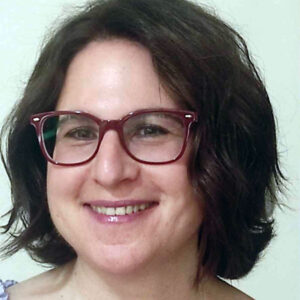 In January 2024, the AAG welcomes Anastasia Christou as the new
In January 2024, the AAG welcomes Anastasia Christou as the new 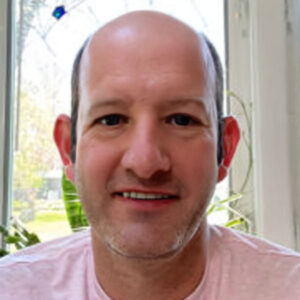 Inwood is a professor in the Department of Geography and The Rock Ethics Institute at the Pennsylvania State University. His research and teaching are focused on the social, political, and economic structures that perpetuate exploitation and injustice with a specific focus on the US South. His work explores racial capitalism and the broad trajectories of white supremacy. In addition, his work has engaged with the U.S. civil rights struggle and a broad understanding of the geography of the American Civil Rights struggle. His work has been funded by the National Science Foundation and his work has been recognized with several AAG honors including the Glenda Laws Award and the AAG’s media achievement award. He has authored or co-authored over fifty peer-reviewed journal articles and is co-editor of the volume Non-Killing Geographies: Violence, Space, and the Search for a More Humane Geography (Center for Global Non-Killing, 2011) and has a forthcoming co-edited book on Geographies of Justice (Bristol University Press 2024). He brings to his editorship at GeoHumanities an awareness of the intersection of geography, humanist value systems and human rights, politics, and history.
Inwood is a professor in the Department of Geography and The Rock Ethics Institute at the Pennsylvania State University. His research and teaching are focused on the social, political, and economic structures that perpetuate exploitation and injustice with a specific focus on the US South. His work explores racial capitalism and the broad trajectories of white supremacy. In addition, his work has engaged with the U.S. civil rights struggle and a broad understanding of the geography of the American Civil Rights struggle. His work has been funded by the National Science Foundation and his work has been recognized with several AAG honors including the Glenda Laws Award and the AAG’s media achievement award. He has authored or co-authored over fifty peer-reviewed journal articles and is co-editor of the volume Non-Killing Geographies: Violence, Space, and the Search for a More Humane Geography (Center for Global Non-Killing, 2011) and has a forthcoming co-edited book on Geographies of Justice (Bristol University Press 2024). He brings to his editorship at GeoHumanities an awareness of the intersection of geography, humanist value systems and human rights, politics, and history.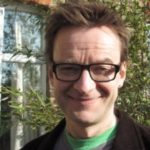 Cresswell is Ogilvie Professor of Human Geography in the School of GeoSciences at the University of Edinburgh. His research focuses on geographies of place and mobility and their role in the constitution of social and cultural life. He is the author or editor of a dozen books and over 100 articles on the role of space, place, and mobility in social and cultural life. Cresswell is also a widely published poet with three collections – most recently Plastiglomerate (Penned in the Margins, 2020). His most recent academic book, Muybridge and Mobility (co-authored with John Ott) was published by the University of California Press in 2022.
Cresswell is Ogilvie Professor of Human Geography in the School of GeoSciences at the University of Edinburgh. His research focuses on geographies of place and mobility and their role in the constitution of social and cultural life. He is the author or editor of a dozen books and over 100 articles on the role of space, place, and mobility in social and cultural life. Cresswell is also a widely published poet with three collections – most recently Plastiglomerate (Penned in the Margins, 2020). His most recent academic book, Muybridge and Mobility (co-authored with John Ott) was published by the University of California Press in 2022. 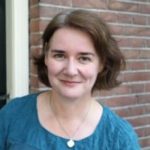 Deborah Dixon is Professor of Geography at the University of Glasgow. Dixon’s internationally recognized work in feminist geopolitics was instrumental to the emergence of geohumanities as an inter-disciplinary field of research and practice. Her work cuts across scientific, artistic, and cultural categories to examine and imagine the ecological and social presence and futures of landscapes and places. Her collaborations include
Deborah Dixon is Professor of Geography at the University of Glasgow. Dixon’s internationally recognized work in feminist geopolitics was instrumental to the emergence of geohumanities as an inter-disciplinary field of research and practice. Her work cuts across scientific, artistic, and cultural categories to examine and imagine the ecological and social presence and futures of landscapes and places. Her collaborations include 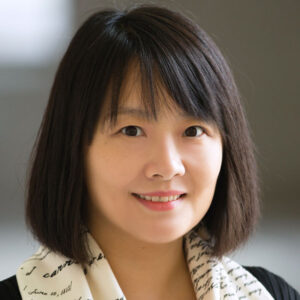 Guo Chen has been named the first Human Geography/Nature and Society editor for The Professional Geographer, inaugurating a new position at the journal. Chen will join current editor Heejun Chang, who will continue in his second term as editor, focusing on articles related to Geographic Methods/Physical Geography, Earth and Environmental Sciences.
Guo Chen has been named the first Human Geography/Nature and Society editor for The Professional Geographer, inaugurating a new position at the journal. Chen will join current editor Heejun Chang, who will continue in his second term as editor, focusing on articles related to Geographic Methods/Physical Geography, Earth and Environmental Sciences.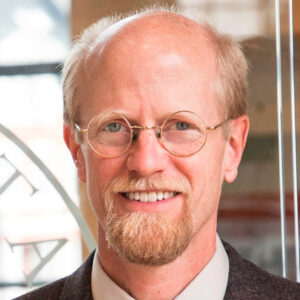 Adams is the longtime director of the Urban Studies Program at the University of Texas, first in the UT Department of Geography and the Environment now in the Department of American Studies. His service to AAG includes founding the Media Geography Specialty Group (now Media and Communication). From 2015 to 2020, he served as associate professor II at the University of Bergen, funded by the Research Council of Norway. In 2001, he was a Fulbright fellow at McGill University and University of Montreal, Quebec. His current research focuses on sociospatial and political aspects of digital media, digital humanities, and culturally specific understandings of environmental risk and climate change.
Adams is the longtime director of the Urban Studies Program at the University of Texas, first in the UT Department of Geography and the Environment now in the Department of American Studies. His service to AAG includes founding the Media Geography Specialty Group (now Media and Communication). From 2015 to 2020, he served as associate professor II at the University of Bergen, funded by the Research Council of Norway. In 2001, he was a Fulbright fellow at McGill University and University of Montreal, Quebec. His current research focuses on sociospatial and political aspects of digital media, digital humanities, and culturally specific understandings of environmental risk and climate change.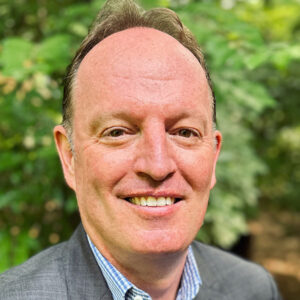 King is professor and head of the Department of Geography at the Pennsylvania State University. His affiliations range across the university, as a faculty research associate with the Population Research Institute, research affiliate with the Earth and Environmental Systems Institute, and faculty affiliate with the School of International Affairs and Consortium on Substance Use and Addiction. King is an honorary research associate with the African Climate and Development Initiative at the University of Cape Town and was selected as a National Academy of Sciences Kavli Fellow in 2017. He previously served from 2021 to 2023 as co-editor of Human Geography and Nature & Society for the Annals. King’s research, teaching, and outreach focuses on livelihoods, conservation and development, environmental change, and human health, centering in Southern Africa. King’s laboratory group (HELIX: Health and Environment Landscapes for Interdisciplinary eXchange) is examining how COVID-19 is transforming the US opioid epidemic. His book, States of Disease: Political Environments and Human Health University of California Press, 2017), received the Julian Minghi Distinguished Book Award.
King is professor and head of the Department of Geography at the Pennsylvania State University. His affiliations range across the university, as a faculty research associate with the Population Research Institute, research affiliate with the Earth and Environmental Systems Institute, and faculty affiliate with the School of International Affairs and Consortium on Substance Use and Addiction. King is an honorary research associate with the African Climate and Development Initiative at the University of Cape Town and was selected as a National Academy of Sciences Kavli Fellow in 2017. He previously served from 2021 to 2023 as co-editor of Human Geography and Nature & Society for the Annals. King’s research, teaching, and outreach focuses on livelihoods, conservation and development, environmental change, and human health, centering in Southern Africa. King’s laboratory group (HELIX: Health and Environment Landscapes for Interdisciplinary eXchange) is examining how COVID-19 is transforming the US opioid epidemic. His book, States of Disease: Political Environments and Human Health University of California Press, 2017), received the Julian Minghi Distinguished Book Award. Strauss brought to the role of editor their significant publications in economic and labor geographies, feminist theory, migration studies, legal geographies, environmental change, urban political ecology, and critical urban theory. With extensive publications in geography, social science, and law journals, Strauss has also served on six editorial boards and been a reviewer for many papers in and beyond geography. Strauss’s tenure with the Annals was characterized by encouragement of paper submissions from outside of North America and in diverse topics areas “that still evidence a commitment to engagement with geography and geographical debate.”
Strauss brought to the role of editor their significant publications in economic and labor geographies, feminist theory, migration studies, legal geographies, environmental change, urban political ecology, and critical urban theory. With extensive publications in geography, social science, and law journals, Strauss has also served on six editorial boards and been a reviewer for many papers in and beyond geography. Strauss’s tenure with the Annals was characterized by encouragement of paper submissions from outside of North America and in diverse topics areas “that still evidence a commitment to engagement with geography and geographical debate.” Meehan is a broadly trained human-environment geographer with expertise in urban political ecology, environmental justice, water policy, mixed methods, and science and technology studies. She is co-author of Water: A Critical Introduction (Wiley, 2023), with Naho Mirumachi, Alex Loftus, and Majed Akhter. She is co-editor with Kendra Strauss of Precarious Worlds: Contested Geographies of Social Reproduction (University of Georgia Press, 2015). In 2023 she won the European Research Council’s Consolidator Grant award to support her research on household water insecurity and water shutoffs in high-income countries. During her time at the Annals, Meehan sought to democratize knowledge and expand the audiences for the journal, beyond the geography discipline and beyond academia. She encouraged the use of Annals as a platform for key debates in the discipline and worked with the other editors to bring human-environment topics into the foreground, especially work that focused on racialized natures and environmental justice. “I have been thrilled to work with the editorial board, my co-editors, AAG staff, and the AAG Council to shepherd the very best geographic scholarship to the pages of the Annals,” Meehan says.
Meehan is a broadly trained human-environment geographer with expertise in urban political ecology, environmental justice, water policy, mixed methods, and science and technology studies. She is co-author of Water: A Critical Introduction (Wiley, 2023), with Naho Mirumachi, Alex Loftus, and Majed Akhter. She is co-editor with Kendra Strauss of Precarious Worlds: Contested Geographies of Social Reproduction (University of Georgia Press, 2015). In 2023 she won the European Research Council’s Consolidator Grant award to support her research on household water insecurity and water shutoffs in high-income countries. During her time at the Annals, Meehan sought to democratize knowledge and expand the audiences for the journal, beyond the geography discipline and beyond academia. She encouraged the use of Annals as a platform for key debates in the discipline and worked with the other editors to bring human-environment topics into the foreground, especially work that focused on racialized natures and environmental justice. “I have been thrilled to work with the editorial board, my co-editors, AAG staff, and the AAG Council to shepherd the very best geographic scholarship to the pages of the Annals,” Meehan says.